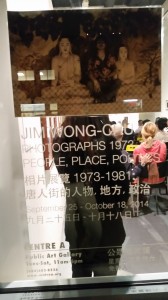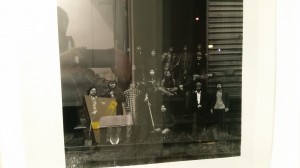Michel-Rolf Trouillot is the author of the first history of Haiti written in Creole… He couldn’t believe that there were no works of history in Creole, the language the slaves used to express themselves, the very ones who struggled to turn the colony into a country. 53
My childhood was filled with stories of slaves whose only weapon was their longing for freedom and a senseless kind of bravery. On summer evenings, my grandmother would tell me of the exploits of our heroes who had to take everything from the enemy weapons and the art of war, for starters. Even the French language was part of “spoils of war.” 75
The class discussion on translation, especially on Homel’s words, gives me a chance to visit the role of languages. Homel states that French is an “external” tongue, and that Creole is the native tongue for Dany Laferriere. This suggests a colonial view of language, which designates different roles for the native and the European language: “external” suggests things like business, and politics, while “native” suggests domestic, spiritual, etc. However, unless Laferriere directly told Homel in those words, I am not sure whether the categorization is satisfactory. At least in my case, language means something different.
It may be argued that the imperial languages, such as English and French, were one of the foundational elements of colonization. In Haiti, the French language was appropriated to uphold the suppressive institutions of slavery and to maintain superiority of the Western culture, systematically eradicating native traditions. A very similar comparison can be made for the English language and the atrocities against First Nations in Canada. It may also be successfully argued that these languages are still used to preserve the institutionalized colonial hegemonies in many places. Therefore, as a response to the encroachment of language, many post-colonial writers choose to write and represent in their native tongues. Trouillot writing the history book in Creole is an apt example.
However, what about Laferriere? Is he trapped within the colonial construct because French is the language he writes in?
Language is more than means of business or social and political representation; it is the basic units of communication that display affection and human emotions. Especially in the present day, when “texting” of different kinds constitute the better part of our daily communication, the role of language in expressing emotions is heightened. While English language may be the very foundational institution that upholds colonial patriarchy in Canada, my relationship with the English language is more complex; it is also the means in which I can best express myself. For me, the English language is the language of affection and wisdom.
There are many things that languages represent. Perhaps for the socio-political scholars who noted the relationship between colonialism and language, it is natural that language signifies political relations. For Granny Laferriere’s generation, “the French language was part of ‘spoils of war’.” For Laferriere, the French language unites him with other post-colonial Francophone writers throughout the world, and makes him beneficiary of the accomplishments of preceding artists like Aime Cesaire.
It may appear paradoxical for writers to use the colonizer’s language for post-colonial representation, but language cannot be restricted or considered as mere means of socio-political representation. Laferriere’s aesthetics is not anti-colonial- it is post-colonial. And his French language, too, speaks beyond the colonial construct.
Works Cited:
Homel, David. “Tin-Flutting It: On Translating Dany Laferriere.” Culture in Transit. Translating the Literature of Quebec. Ed. Sherry Simon. Montreal: Vehicule, 1995. 47-54
Laferriere, Dany; Homel, David. The World is Moving Around Me : A Memoir of the Haiti Earthquake. New York: Arsenal Pulp Press, 2013. Ebook Library. Web. 07 Nov. 2014.

